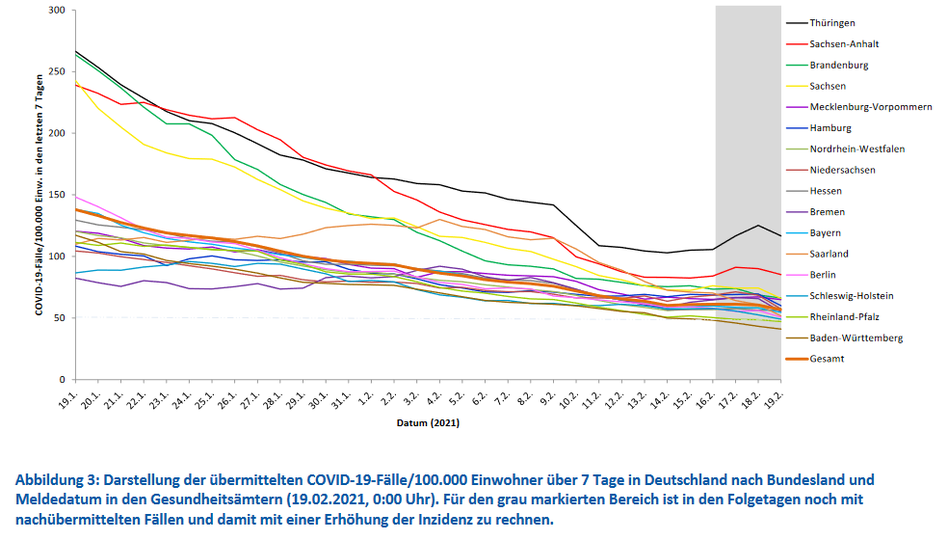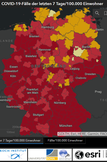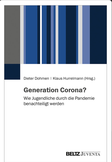It's possible the third Corona wave is approaching. What to do if it really comes?
Part 1: Current developments and a cautious look into the coming weeks
Everyone is longing for further easing. After all, Corona case numbers continued to fall steadily for weeks and the first threshold was within reach. However, since the beginning of the week, the decline from the previous week is becoming much weaker and approached a standstill. At the same time, the proportion of the British mutation, B117, is increasing significantly - exponentially in some cases. The rki (www.rki.de) assumes that it will affect children and adolescents more than the previous variant.

What is the current situation?
The number of confirmed infections with COVID 19 has decreased significantly in the last two months. Whereas around Christmas more than 30,000 infections were reported in one day, the magnitude has decreased to less than 10,000 - but the daily values fluctuate considerably. The national average 7-day incidence on Friday was 57 per 100,000 population. However, there are considerable fluctuations between the federal states: while Baden-Württemberg and Rhineland-Palatinate are now already below the mark of 50 new infections per 100,000 in the last few days, the value in Thuringia was recently still above 100, and in Saxony-Anhalt it was 85. The figure also shows that the values in several states had recently already increased again somewhat.
What developments can be expected in the coming days and weeks?
Looking at the current developments, the chart also shows that the curves are no longer falling as sharply as they were until the end of last week. Rather, the last few days showed values that were mostly around the level of the previous week. That is, there is a clear weakening of the decline and it could be that the trend reverses again and begins to rise.
In recent days, and in some cases weeks, various scientists have also pointed to a possible resurgence, and various forecasts also indicate such a direction of development.
This means that there is a risk - possibly considerable - that the infection figures could rise again. Whether that will be the case should become clear in the next week or two. Even if it is possible that the downward movement - which we all presumably hope for - will continue, we should be prepared for the fact that the numbers could also rise again.
The British mutation has increasingly higher proportions of infections
A very important role in the current infection events is played by the mutation coming from England, which is called B.1.1.7. Its share of all infections has quadrupled in the last two weeks from 6 percent to now almost 25 percent.
If such an exponential increase is also repeated in the coming week, then their share should be between 40 and 50 percent by the end of next week. The South American and Brazilian mutation is also gaining in importance; however, at a - at least still - very low level.
Children and young people could be more at risk than before
The British mutation is, on the one hand, important for the general incidence of infection. It is more contagious, i.e. the risk of becoming infected if someone in the immediate vicinity is infected with it is 25 to 40 percent higher than with the original variant. In addition, the course is less favourable and, in particular, longer.
Another important difference is that it is most likely to be more contagious for children and adolescents as well, and also much more severe in its effects. This means that not only can more children be expected to become infected, but also that they can develop more severe symptoms and become more seriously ill.
Part 2 will be released on Sunday, Feb. 21, 2021 (see here)
Published on
Topics
Articles on the topic
-
How do I find a school place for my child?
Depending on the state and type of school, different things need to be...

-
Childcare - how does it work in Germany?
The path from application to daycare place is simple and complicated at...

-
Controversy: open schools or close schools?
Politicians should react now to slide unprepared into a forced closure....

-
Corona pandemic severely disadvantages children and young people - but there is no "Corona generation"
This is a core finding of the anthology "Generation Corona? How young...

-
What to do after the Easter holidays? - Part 2: Final exams
An overview of the regulatory diversity

-
Kitas and schools in a state of flux
Update from 9.4.2021 on the current regulations
